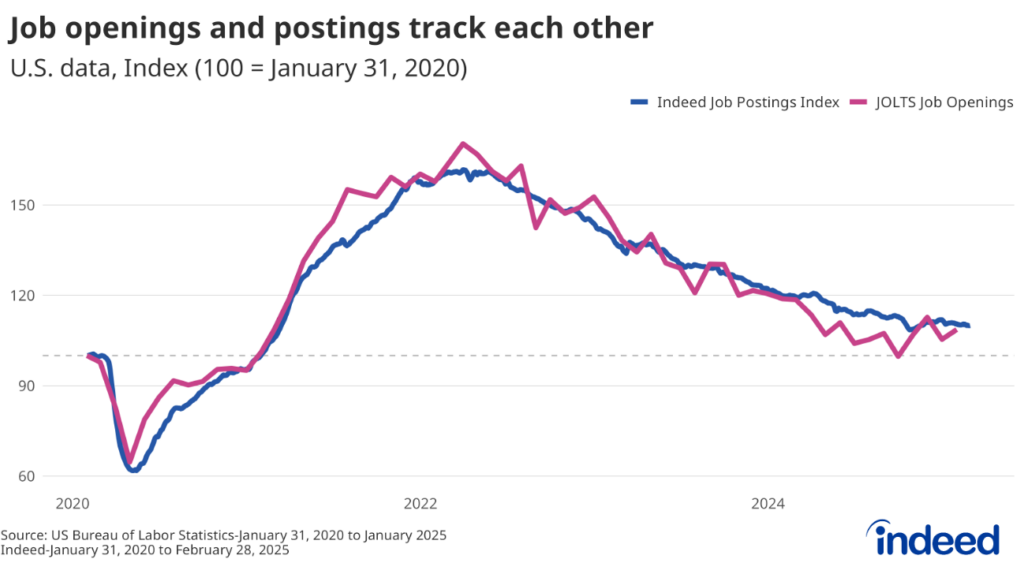Key Points:
- According to the Bureau of Labor Statistics, U.S. job openings fell to 7.6 million in February from an upwardly revised 7.8 million in January.
- The layoff, hires, and quits rates all remained largely unchanged, suggesting a market frozen in place since the start of the year.
- There are some early signs that state and local governments are beginning to feel the spillover from several months of rapid changes to the federal workforce, especially in the education sector.
Punxsutawney Phil’s February prognosis was for an extended winter — and JOLTS data from that month shows a market that remains frozen by uncertainty at the start of the year, with little change in job openings, hiring, or quits. Through February, the ripple effects of a rapid series of policy changes, federal hiring freezes, and mass federal firings (and, in some cases, rehirings) remained mostly contained in the public sector. There are signs that state and local governments are also beginning to feel the pinch, especially in the education sector, while the private sector has remained largely frozen since the beginning of the year. But there is only so long that the private sector can continue to hold its breath in hopes of more certainty, and the longer it waits to exhale, the more the risk of longer-term damage comes into focus.
The tiny signals the market is showing point to retrenchment rather than expansion, as job openings continue to slowly decline and hires stay consistently low. Steadily low layoff activity suggests employers are largely betting they can, at least, continue business as usual with their current workforces, even as they remain reluctant to hire more. The question going forward is if (and how) employers can shake off their malaise and commit to larger-scale hiring efforts, or if mounting uncertainty causes them to move the other way and begin downsizing. Friday’s March jobs report will offer more timely clues as to how employers are navigating a tricky crossroads. We will be watching closely to see if (and how far) the ripple effects of more rapid changes to the federal workforce have spread into the private sector. Another month of data will make a huge difference in our ability to see how long this winter will really last.


